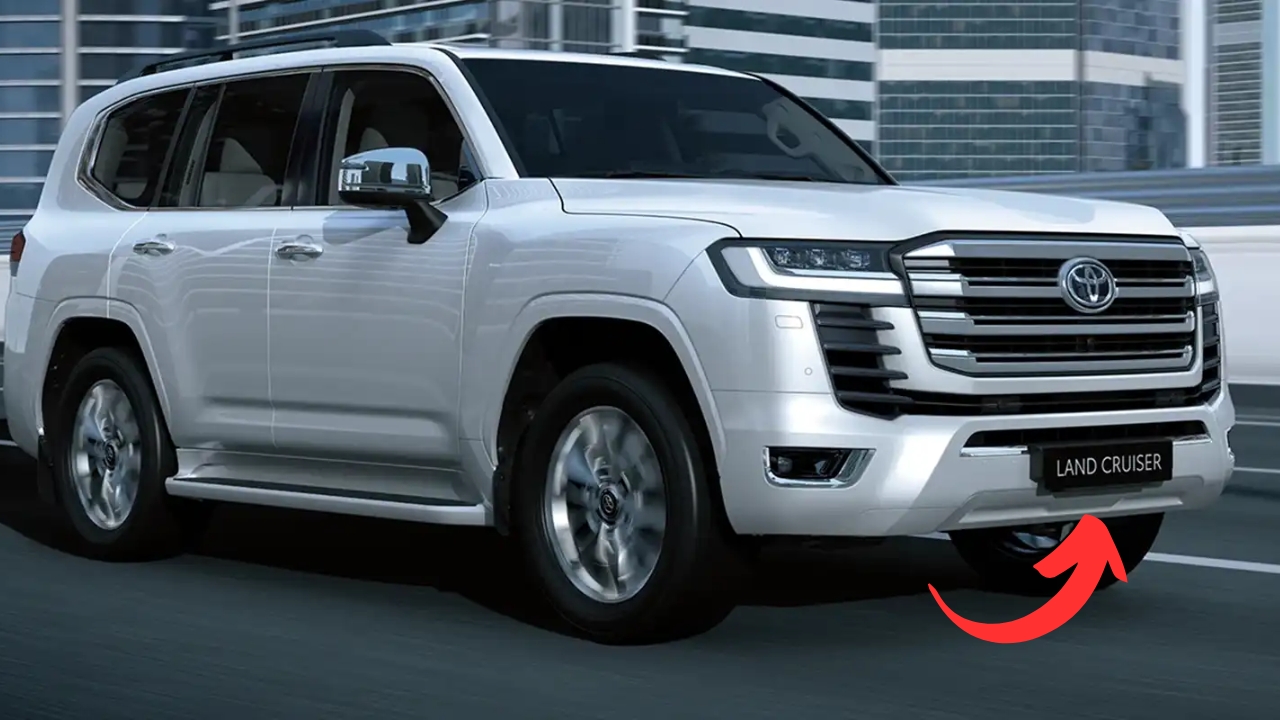Toyota LandCruiser 300 Hybrid : The automotive landscape in Australia is set for a significant shift as Toyota officially confirms the arrival of the LandCruiser 300 Hybrid, marking a historic milestone for the iconic off-road vehicle. T
his announcement represents Toyota’s first-ever hybrid variant of the beloved LandCruiser 300 Series, scheduled to reach Australian showrooms in the first half of 2026.
Revolutionary Powertrain Technology Sets New Standards
The upcoming LandCruiser 300 Hybrid introduces a sophisticated drivetrain that combines traditional combustion power with cutting-edge electric motor technology.
At its heart lies a robust 3.5-litre twin-turbocharged V6 petrol engine working in parallel with an electric motor system. This innovative arrangement allows both the combustion engine and electric motor to simultaneously deliver power to the wheels, creating an exceptionally capable off-road machine.
The power figures are genuinely impressive, with the hybrid system generating a combined output of 341 kilowatts and a substantial 790 Newton-metres of torque. These numbers represent a significant leap forward from the current diesel-powered LandCruiser 300, which produces 227 kilowatts and 700 Newton-metres. This increase translates to approximately 50% more power and 13% additional torque, fundamentally transforming the vehicle’s performance capabilities both on-road and off-road.
Advanced Transmission and Off-Road Capabilities
Toyota has paired this powerful hybrid system with a sophisticated 10-speed automatic transmission, mirroring the technology found in the premium Lexus LX700h. This transmission choice demonstrates Toyota’s commitment to delivering refined driving dynamics while maintaining the rugged reliability that LandCruiser owners expect. The additional gear ratios provide better fuel efficiency during highway cruising while ensuring optimal power delivery during challenging off-road situations.
The development process has been particularly rigorous, with extensive testing conducted across diverse climatic conditions in the Middle East. Toyota engineers have subjected the hybrid LandCruiser to both extreme heat and cold weather scenarios, ensuring the vehicle maintains its legendary reliability regardless of environmental challenges. This testing approach reflects Toyota’s understanding that LandCruiser owners often venture into some of the world’s most demanding terrains and climates.
Strategic Market Positioning and Competitive Advantage
The introduction of hybrid technology positions the LandCruiser 300 ahead of its primary competitor, the Nissan Patrol, which currently relies on traditional petrol engines. While Nissan achieved record sales in Australia during 2024 with its aging Y62 generation Patrol, the upcoming Y63 Patrol isn’t expected until late 2026 or early 2027. This timing gives Toyota a significant competitive advantage in the large SUV hybrid market segment.
The hybrid LandCruiser will complement rather than replace the existing diesel variants, providing customers with expanded choice based on their specific needs and preferences. This multi-pathway approach allows Toyota to cater to diverse customer requirements while gradually transitioning toward more environmentally conscious powertrains.
Environmental Considerations and Regulatory Compliance
The hybrid LandCruiser’s arrival coincides with Australia’s implementation of the New Vehicle Efficiency Standard (NVES), which commenced on July 1, 2025, and becomes progressively stricter through 2029. This regulatory framework encourages manufacturers to reduce fleet emissions, making hybrid technology increasingly important for meeting compliance requirements.
Toyota’s hybrid system offers potential fuel economy improvements compared to traditional large SUV engines. Based on similar systems used in Toyota’s American market vehicles, the hybrid LandCruiser may achieve fuel consumption figures approaching those of diesel engines while providing superior power output. This combination addresses growing consumer concerns about fuel costs and environmental impact without compromising performance capabilities.
Technology Integration and User Experience
The LandCruiser 300 Hybrid will likely incorporate Toyota’s latest connectivity and safety technologies, building upon the comprehensive suite already available in current models. The existing LandCruiser 300 Series features advanced safety systems including Dynamic Cruise Control, Lane Trace Assist, and Road Sign Assist, which work together to enhance driver confidence during long-distance touring.
The hybrid system’s integration will provide additional benefits such as regenerative braking, which captures energy during deceleration to recharge the battery system. This technology proves particularly valuable during off-road descents, where the electric motor can provide additional engine braking while simultaneously generating electrical energy.
Market Impact and Customer Reception
The LandCruiser 300 Series currently dominates the large SUV segment in Australia, with over 12,000 units sold through September 2024. The addition of hybrid technology expands the appeal to environmentally conscious buyers who previously might have considered alternative brands or vehicle types. This strategic move demonstrates Toyota’s commitment to maintaining market leadership while adapting to evolving consumer preferences.
Pricing information remains undisclosed, though industry analysts expect the hybrid variant to command a premium over equivalent diesel models. However, potential fuel savings and enhanced performance capabilities may offset the initial price difference for many buyers, particularly those covering significant distances or requiring maximum towing capacity.
Future Implications for the SUV Market
The LandCruiser 300 Hybrid represents more than just another powertrain option; it signals Toyota’s broader strategy for large SUV electrification. While fully electric large SUVs remain limited by range and charging infrastructure constraints, hybrid technology provides an effective interim solution that maintains the versatility and capability that LandCruiser customers demand.
This development also positions Toyota advantageously for potential future regulations requiring lower emissions from new vehicles. By establishing hybrid technology in the LandCruiser lineup now, Toyota creates a foundation for future powertrain developments while maintaining the brand’s reputation for reliability and capability.
Technical Specifications Comparison
| Specification | Current Diesel | New Hybrid |
|---|---|---|
| Engine | 3.3L Twin-Turbo V6 Diesel | 3.5L Twin-Turbo V6 Petrol + Electric Motor |
| Power Output | 227kW | 341kW |
| Torque | 700Nm | 790Nm |
| Transmission | 10-Speed Automatic | 10-Speed Automatic |
| Drive Type | Full-Time 4WD | Full-Time 4WD |
| Fuel Type | Diesel | Petrol + Electric |
| Launch Date | Available Now | First Half 2026 |
Frequently Asked Questions
When will the LandCruiser 300 Hybrid be available in Australia?
Toyota has confirmed the hybrid variant will arrive in Australian dealerships during the first half of 2026, giving customers approximately 12 months to anticipate its arrival.
Will the hybrid cost significantly more than diesel models?
While Toyota hasn’t announced pricing, hybrid variants typically carry a premium over conventional engines. However, potential fuel savings and increased performance may justify the additional cost for many buyers.
Does the hybrid system affect off-road capability?
Toyota has specifically engineered the hybrid system with off-road performance in mind, conducting extensive testing in challenging conditions to ensure it maintains the LandCruiser’s legendary capability.
Will diesel engines still be available?
Yes, Toyota has confirmed that hybrid models will complement, not replace, the existing diesel lineup, providing customers with multiple powertrain choices based on their specific requirements.

